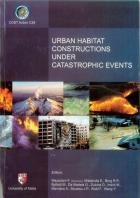
Urban Habitat Constructions Under Catastrophic Events

Repertorium COST

Anàlisis Paleoambientals i Estudi del Territori - Paleoenvironmental Analysis and Landscapes Studies

Quality Assurance on Nuclear Medicine Software - First Annual Report

The Car and its Environments

Modern Polymeric Materials For Environmental Applications- Vol. 4 Issue 2
- Author(s): K. Pielichowski (Ed)
- ISBN/ISSN: 978-83-930641-1-3
Proceedings of the 4th International Seminar including COST MP0701 Workshop. Krakow, 1-3 Dec. 2010

Nuclear Instruments & Methods in Physics Research, Section B (Volume 239, Issues1-2, September 2005) - Beam Interactions With Materials and Atoms
- Pages: 126 pages
- Author(s): H. H. Andersen, L. E. Rehn, C. Trautmann
- Publisher(s): ELSEVIER Publications
- http://www.sciencedirect.com/
- ISBN/ISSN: ISSN 0168-583X | 0168-583X
The techniques of ion beam analysis have already been successfully applied to the objects from our cultural heritage – both for investigation of archaeological artefacts and for studies of objects of art. Meaningful data can be obtained on the technological procedures applied during fabrication of such objects, the type of materials applied and their provenance. Such data cast light on the historical background of particular objects and thus increase their cultural value. On the other hand, such techniques can monitor the deterioration of objects with time, discover reasons for these processes and thus help to maintain their preservation.

Cormorants and the European Environment; exploring cormorant status and distribution on a continental scale
- Pages: 126
- Author(s): van Eerden, M., van Rijn, S., Volponi, S., Paquet, J.-Y. & Carss, D.N.
- Publisher(s): NERC (Centre for Ecology & Hydrology)
- Download from external website
- ISBN/ISSN: 978-1-906698-07-2
INTERCAFE COST Action 635 Final Report I
